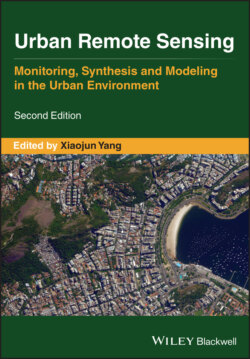Читать книгу Urban Remote Sensing - Группа авторов - Страница 64
3.6 MAJOR CHALLENGES AND POSSIBLE SOLUTIONS 3.6.1 REGULATORY AND LEGAL CHALLENGES
ОглавлениеThe use of UAS for aerial remote sensing presents significant opportunities for urban applications. However, these applications can be constrained by the regulatory framework and legal jurisdictions within which those operations are conducted. The rapid development of UAS technology in recent years has led to a present regulatory challenge facing government officials. How do we allow UAS technology to become an integral tool in a wide variety of industries while also not creating new problems related to the increased presence of UAS in civil airspace? Different countries/states/provinces/regions have UAS regulations that are often structured with similar intentions, especially if they are regional neighbors. However, there is still a wide discrepancy in the specific details of these regulations from one regulatory body to another. Although the specific details of one country’s UAS regulations may differ from the rest, there are many common topics that the regulations are focused on. These regulatory topics generally include restrictions on flight altitude, max UAS speed during flight, which airspaces UAS can be operated within, design limitations of UAS platforms, and other potential risks posed to the public (Al Shibli, 2015). The use of UAS in civil airspace presents a host of potential risks and problems, such as surveillance and privacy concerns (West and Bowman, 2016), noise disturbances to the public (Wallace et al., 2018), and the general lack of universally standardized safety features in contemporary UAS models (Plioutsias et al., 2018). For these reasons, it is highly advised for UAS operators to look at the regulations from the specific country before conducting any aerial operations.
In the United States, the Federal Aviation Administration (FAA) regulates all UAS operations under Part 107 of Title 14 of the Code of Federal Regulations. The UAS‐specific part, “Part 107,” was announced in July 2016 and serves as the regulatory framework structuring hobbyist and commercial operations for all UAS flown in the US General information on Part 107 regulatory framework and UAS operations can be found at the FAA’s public website, www.faa.gov/uas. Part 107 generally allows for UAS operations to be conducted if the UAS is under 55 pounds, at or below 400 ft AGL, and always within the visual line‐of‐sight. There are many more rules included in the Part 107 framework, such as limitations on operations in particular airspaces, limitations on operations over people, visibility requirements, commercial pilot certification requirements, and the waiver process (14 C.F.R. § 107, 2020). With the expansion of UAS platforms for not only hobbyists but also commercial purposes, there is a litany of new safety issues that the FAA has not had to regulate in prior decades until now. Lower altitude operations by UA pose new risks to the national airspace and terrestrial environment alike, ranging from physical risks of collisions with ground structures or manned aircraft (Ramasamy et al., 2016), to challenges with regulatory compliance by UAS operators (Morris and Thurston, 2015). Some regulations crafted in an attempt to uphold safety during UAS operations have inadvertently led to significant constraints on the feasibility of particular UAS applications. The best example of this is how the regulations impact the feasibility of urban remote sensing applications with UAS in the US Limitations on flights over people, critical infrastructure, and traffic make it effectively impossible to conduct any autonomous operations with a UAS in dense urban areas. As Card (2018) noted, these regulations are increasingly prohibitive to not only hobbyists and research purposes but also to the integration of UAS into commercial industries. Although the FAA’s current Part 107 regulations support safe operations with UAS, they do create limitations on the types of industries that can make use of this technology inadvertently. According to Wallace et al. (2018), this regulatory trend is also not limited to only the United States, and there are many other countries around the world that are facing the same regulatory challenges with the integration of this technology.
